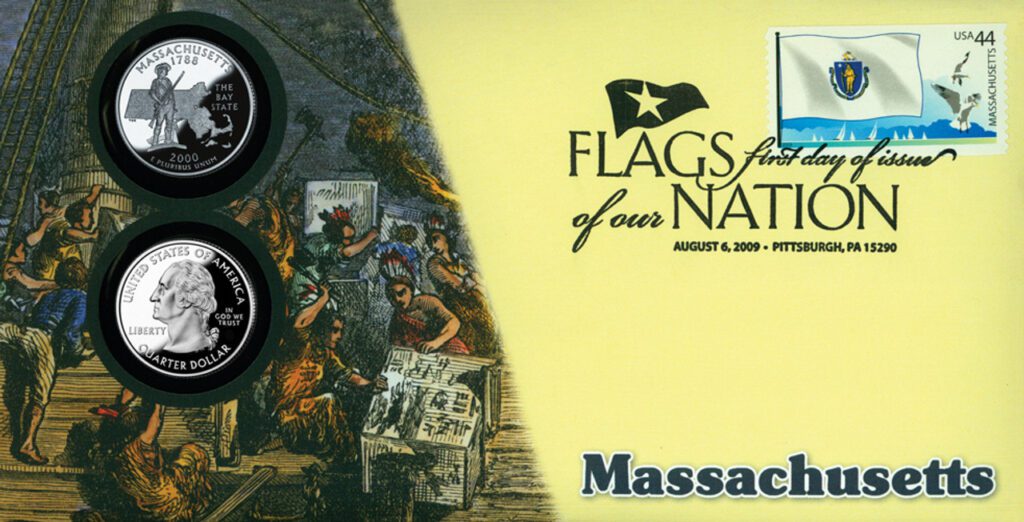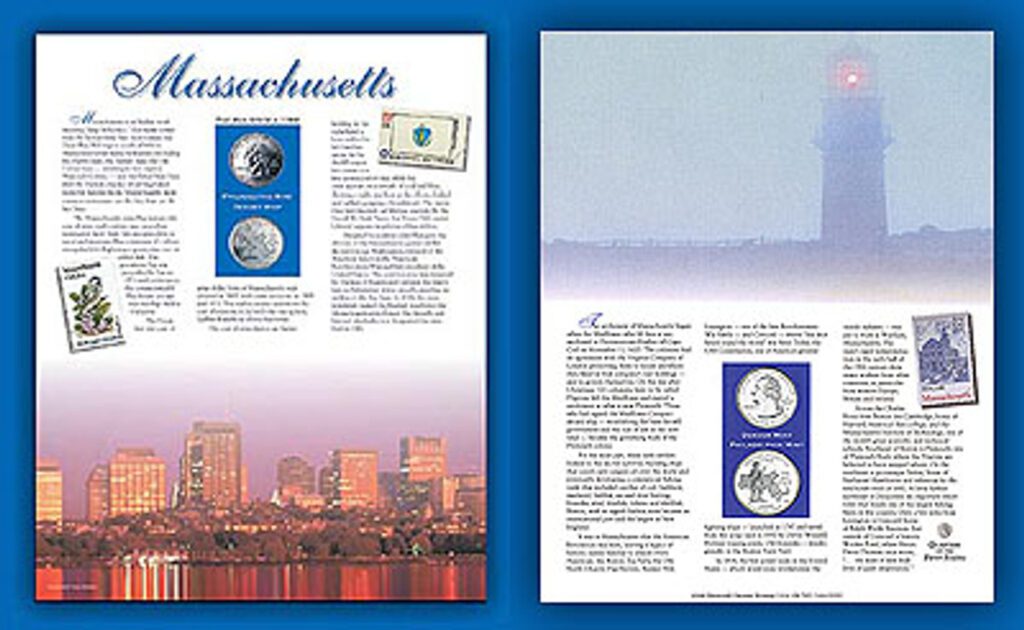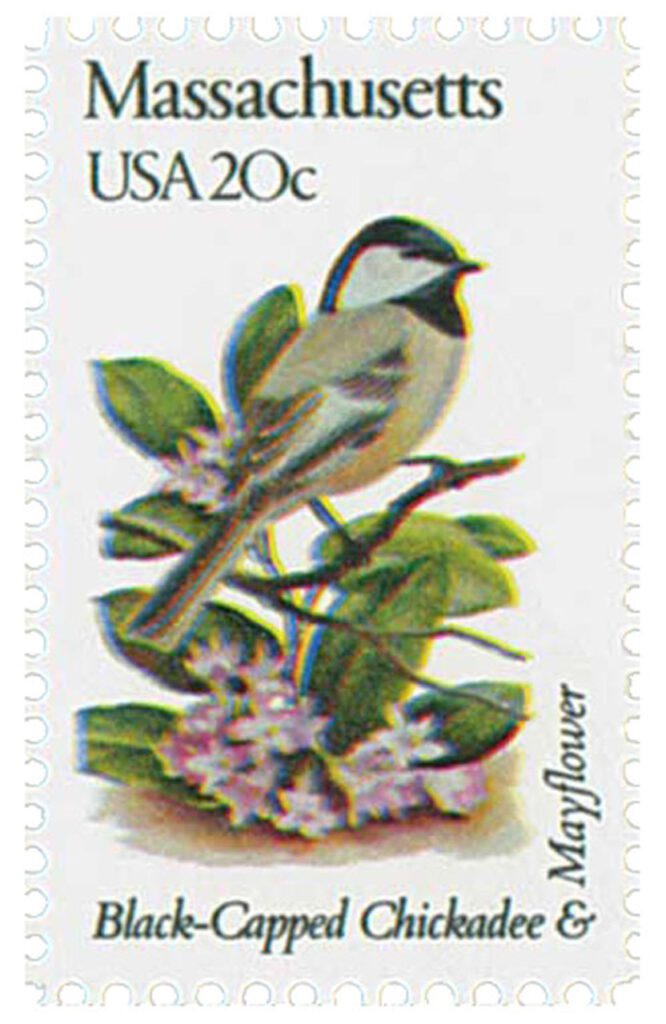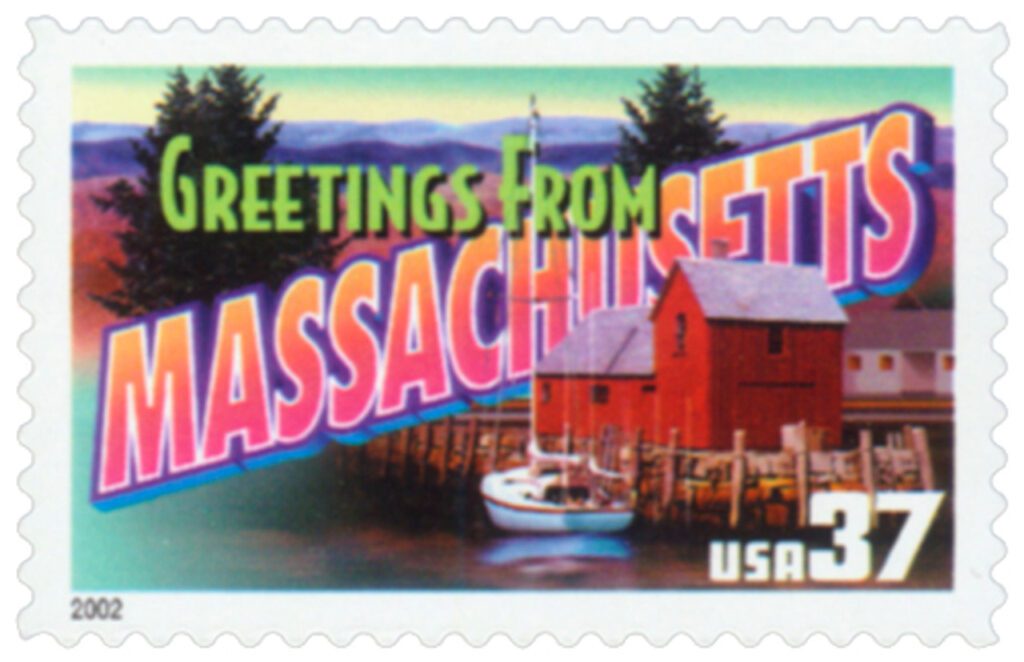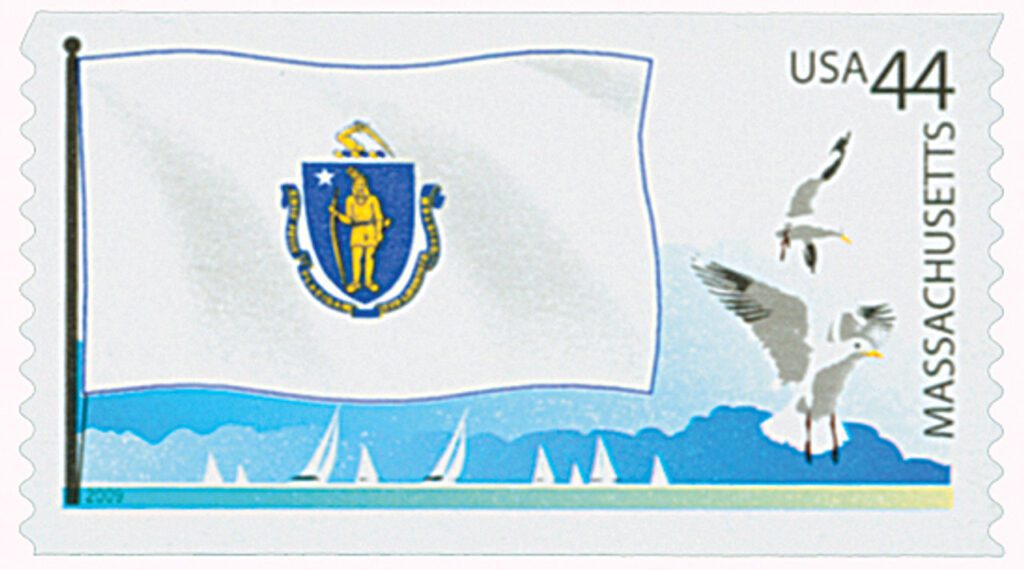On February 6, 1788, Massachusetts became the 6th state to join the Union.
Native Americans lived in the Massachusetts region for more than 3,000 years. In 1614, English sea captain John Smith sailed along the coast of Massachusetts. Smith’s book, A Description of New England, guided the Pilgrims to Massachusetts.
On September 16, 1620, 41 Separatists and 61 others seeking to establish a community based on their religious views journeyed to America. These Pilgrims sailed from Plymouth, England, aboard the Mayflower. That November, they landed in what is now known as Provincetown Harbor. Before they set foot on land, the male Pilgrims drew up the Mayflower Compact – the first agreement for self-government ever put into writing in America.
The Pilgrims faced a difficult first winter – about half of them perished. Early in 1621, the Pilgrims made contact with American Native Americans. These Natives taught them how to plant corn and beans, and how to live more comfortably. Soon, more settlers came to the colony, and it began to flourish.
The Puritans received a charter from King Charles I to found a colony in the Massachusetts Bay area. In 1630, about 1,000 Puritans voyaged to the New World. They founded a settlement in what is now Boston. The Massachusetts Bay Colony grew quickly, and by 1640, it had 10,000 settlers.
In 1675, King Philip, a Wampanoag chief in the area claimed by the English colonists, decided to push the Europeans out of his homeland. King Philip was killed in 1676, effectively ending the war, but not before hundreds of Europeans and Native Americans died. From 1689 to 1713, the colonists, as well as British troops, were caught up in the French and Indian War. The fighting stopped for a time, but erupted again during the 1740s, before finally ending in 1763.
The French and Indian War left Britain in debt, so taxes were levied on the New World colonies. The colonists’ slogan, “No taxation without representation,” became popular in Massachusetts. Protests were staged. In 1770, British soldiers fired on a group of angry colonists, killing five of them. The Boston Massacre, as it came to be known, sparked public resentment against the British. In 1773, angry colonists, disguised as Indians, staged the Boston Tea Party to protest a tea tax, dumping 342 chests of tea into Boston Harbor. Britain responded to the Boston Tea Party by passing a series of punitive laws, known in the colonies as the Intolerable Acts. These acts provoked the colonists and set the stage for the Revolutionary War.
The American Revolution began in Massachusetts, and the majority of the early fighting took place in its territory. Massachusetts soldiers fought bravely in the first battles of the war, which included Lexington, Concord, and Bunker Hill. In the spring of 1776, General George Washington drove the British out of Boston. This marked the first major Colonial victory of the war. Massachusetts supplied a large number of the soldiers who fought in the war, and ships from the state inflicted heavy damage on British merchant vessels. In 1783, the British signed the Treaty of Paris, which recognized the independence of the United States, and ended the war.
On February 6, 1788, Massachusetts ratified the United States Constitution and became the sixth state to join the Union. As part of the ratification process, the state insisted that certain measures concerning individual rights be added to the document. On December 15, 1791, the Bill of Rights became an important part of the “Law of the Land.”
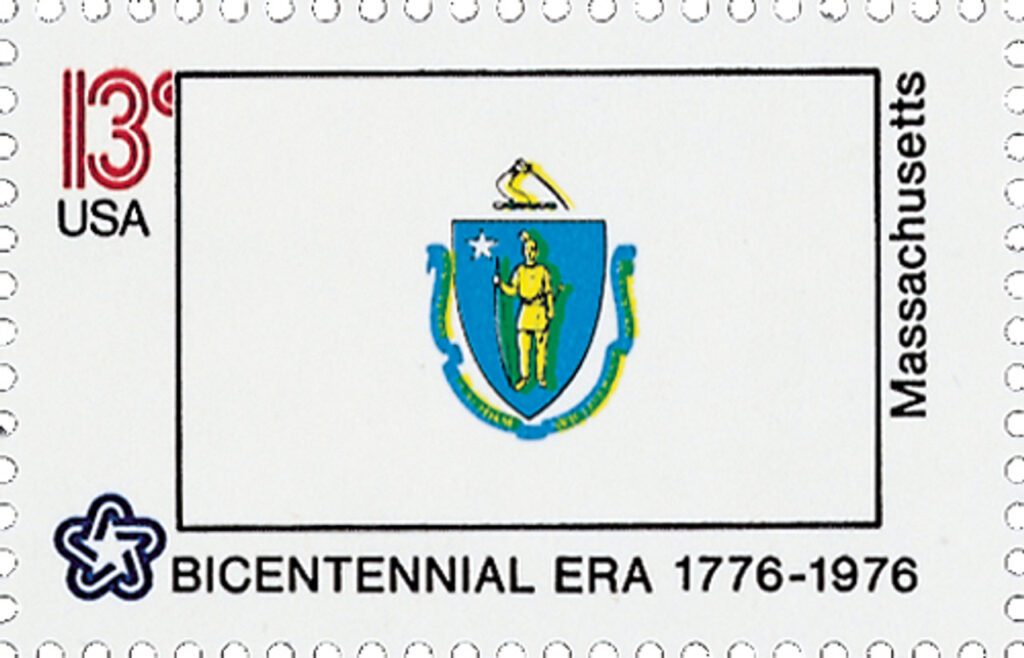
President Thomas Jefferson passed the Embargo Act of 1807 in an attempt to avoid war. The Embargo Act, which curbed shipping to foreign ports, forced economic change in Massachusetts. The state pioneered the textile and shoe industries. In 1814, Francis Cabot Lowell built one of the first textile mills in the US, in Waltham. Soon, more textile mills were opened in the eastern portion of the state. Farmers suffered under the new economic system. When the Erie Canal opened in 1825, allowing farm products from the West to be imported, most farmers left the state or took factory jobs. In New Bedford, Nantucket, and Boston, the whaling industry flourished until the 1860s, when kerosene replaced whale oil as the major fuel. The mill cities grew rapidly, sometimes doubling their population in less than a decade. Advancements in power were made as well; as waterpower proved inadequate for large-scale factories, steam engines powered by coal were introduced.
After the Civil War, many industries expanded greatly in Massachusetts, especially textiles, leather, and metal products. Alexander Graham Bell invented the telephone in Boston. Although the economy suffered during the Great Depression, it soared during World War II. Factories and shipyards produced large numbers of products needed for the war effort. During the 1950s and ’60s, many of the state’s traditional industries fell into decline. These were replaced by high-technology industries such as electronics, computers, cameras, jet engines, and missile parts. Today, the state has a thriving, modern industrial base, and a large number of colleges and universities.
| FREE printable This Day in History album pages Download a PDF of today’s article. Get a binder or other supplies to create your This Day in History album. |
Discover what else happened on This Day in History.


